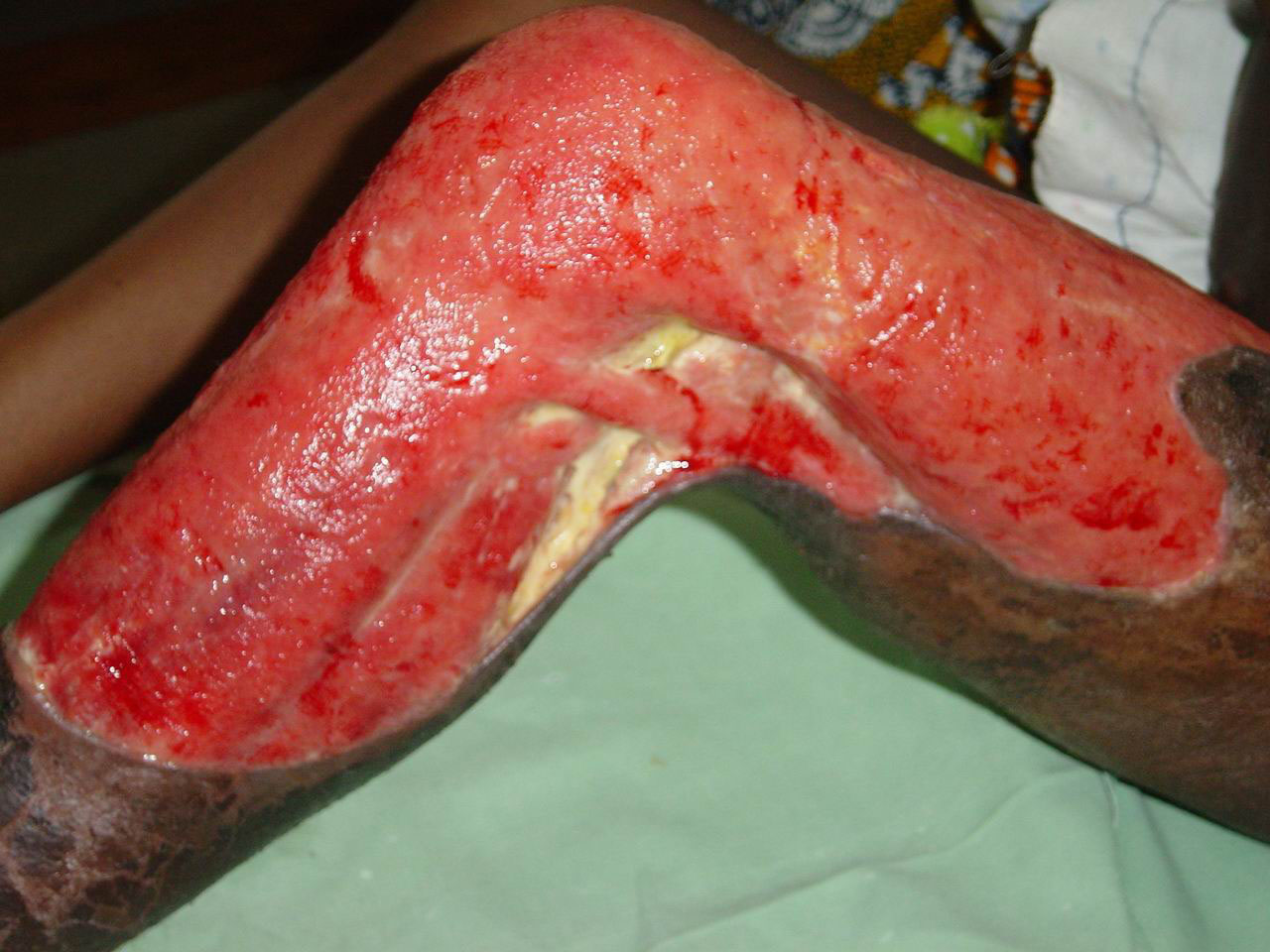Patients with Buruli ulcer benefit by delaying surgery decision
Click Here to Manage Email Alerts

Study findings suggest that patients being treated for Buruli ulcer benefit from delaying the decision of whether to undergo excision surgery, once the main treatment option for the often debilitating neglected tropical disease, researchers said.
Buruli ulcer is caused by Mycobacterium ulcerans, from the same family of pathogens that cause tuberculosis and leprosy. In the absence of treatment, it causes characteristic ulcers on the arms or legs of patients that can grow to become very large. Worldwide, at least 70% of all cases are diagnosed in the ulceration stage, according to WHO. The exact mode of transmission of Buruli ulcer is unknown, but people likely acquire the infection from the environment, perhaps from insects in water, according to the CDC.
The disease occurs mostly in tropical or subtropical climates and is most prevalent in West and Central Africa, frequently affecting children aged younger than 15 years. It has increasingly been reported in Australia, where it has also been found in several animal species, including horses and dogs.
Since 2004, WHO has recommended treating Buruli ulcer with antibiotics, currently either an 8-week combination of rifampicin and streptomycin or rifampicin and clarithromycin, depending on the patient, although the effectiveness of the second option has not been proven by a randomized trial, according to WHO.
Writing in The Lancet Infectious Diseases, Ymkje Stienstra, MD, professor in the department of internal medicine and infectious diseases at the University of Groningen in Groningen, Netherlands, and colleagues said surgery has persisted as an adjunct therapy for Buruli ulcer, with WHO recommending that patients wait at least 4 weeks after antibiotic treatment to have the operation. They said clinicians in endemic areas commonly wait twice as long to decide if surgery is needed. In a randomized controlled trial at a hospital in the West African country of Benin, Stienstra and colleagues investigated the effects of delaying the decision even longer by waiting until 14 weeks after the start of antibiotic therapy.
Between July 1, 2011, and Jan. 15, 2015, they enrolled 119 patients with Buruli ulcer aged 3 years or older and randomly assigned them to be assessed for excision surgery 8 weeks or 14 weeks after initiating antibiotic treatment, which included once-daily oral rifampicin (10 mg/kg) and intramuscular streptomycin (15 mg/kg). A doctor, who was in possession of clinical information and photographs of the ulcers but did not know to which group the patients belonged, made the decision remotely of whether to operate based on a preordained set of criteria. The primary endpoint was the number of patients who healed without needing surgery — excluding skin grafting, which was performed as needed — after 50 weeks.
After 1 year, 96% of patients who were not assessed for surgery until 14 weeks after starting antibiotic therapy had healed lesions compared with 90% of patients in the standard-care group, Stienstra and colleagues reported. Of the patients in the delayed-decision group, 67% healed without surgical intervention compared with 48% in the standard-care group — a risk ratio of 1.4 (95% CI, 1-1.96). The median time to heal in both groups was 21 weeks and functional limitations were similar, occurring in 11% of patients in the delayed-decision group and 5% in the standard-care group.
According to the researchers, postponing the decision to operate from 8 weeks to 14 weeks reduced the median duration of hospitalization from 131 days to 5 days (P = .024) and the median duration of wound care from 182 days to 153 days (P = .036).
“In our study, patients with Buruli ulcer lesions treated with standard antimicrobial treatment benefited from delaying decisions about surgery to week 14, instead of week 8 at the end of antimicrobial treatment. Even large ulcers healed without surgery if the decision to operate was delayed,” Stienstra and colleagues wrote. “Postponing the decision of surgery increased the probability of patients with Buruli ulcer healing without surgery. It also reduced median time of hospitalization and wound care.”
In a related editorial, Paul D.R. Johnson, MBBS, PhD, deputy director of infectious diseases at Austin Health and professor at the University of Melbourne, Australia, and director of the WHO Collaborating Centre for Mycobacterium Ulcerans, said the study provides clinicians evidence “that waiting and being patient is the best approach for patients with Buruli ulcer.” – by Gerard Gallagher
Disclosures: The authors report no relevant financial disclosures.
